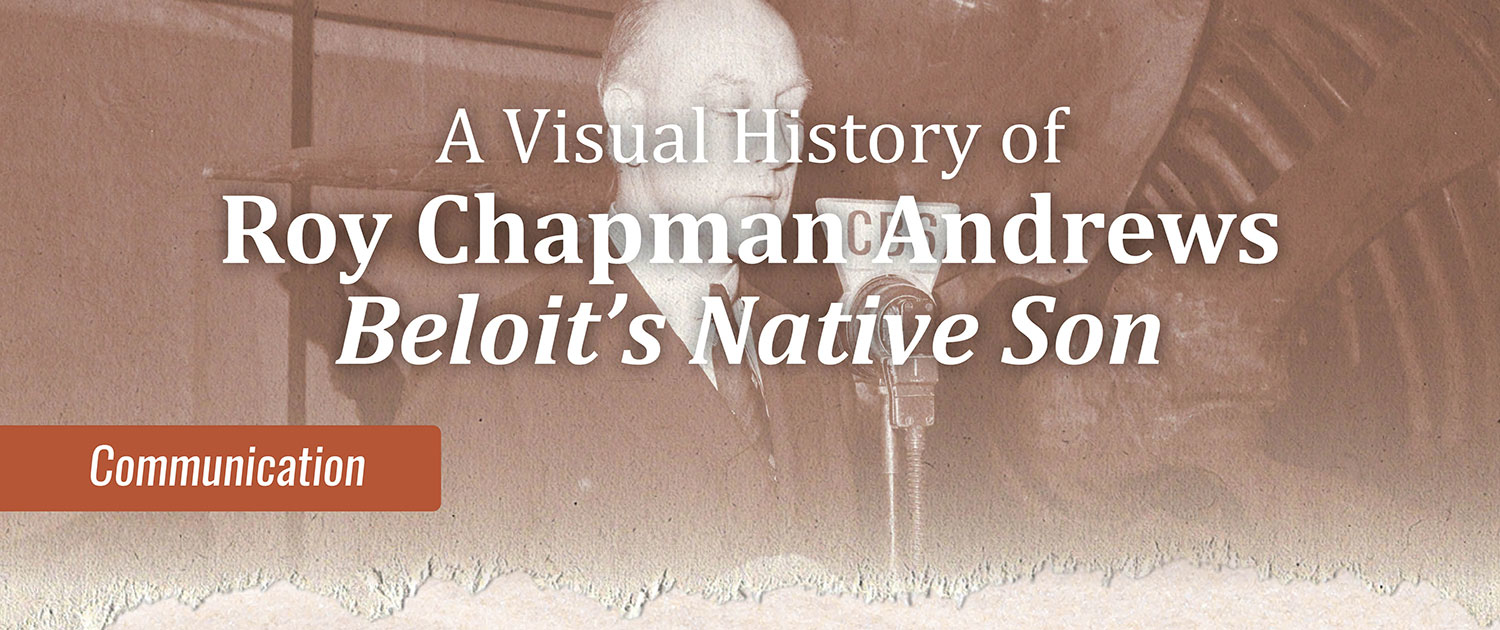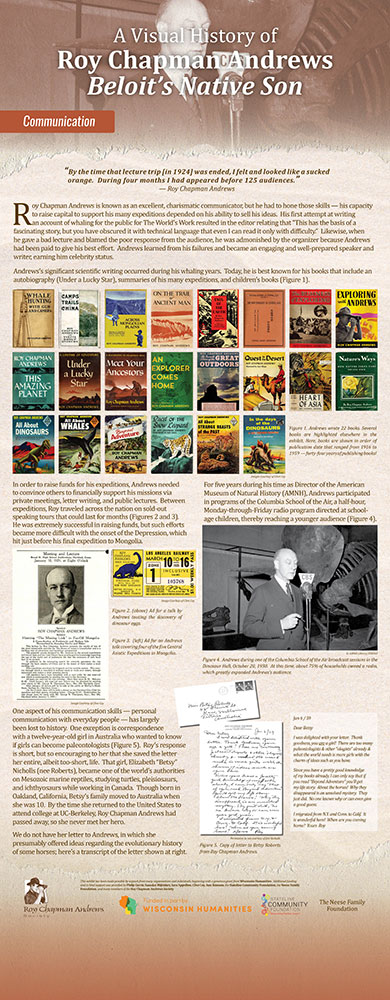Communication
“By the time that lecture trip [in 1924] was ended, I felt and looked like a sucked orange. During four months I had appeared before 125 audiences.”
~Roy Chapman Andrews
Roy Chapman Andrews is known as an excellent, charismatic communicator, but he had to hone those skills — his capacity to raise capital to support his many expeditions depended on his ability to sell his ideas. His first attempt at writing an account of whaling for the public for The World’s Work resulted in the editor relating that “This has the basis of a fascinating story, but you have obscured it with technical language that even I can read it only with difficulty.” Likewise, when he gave a bad lecture and blamed the poor response from the audience, he was admonished by the organizer because Andrews had been paid to give his best effort. Andrews learned from his failures and became an engaging and well-prepared speaker and writer, earning him celebrity status.
Andrews’s significant scientific writing occurred during his whaling years. Today, he is best known for his books that include an autobiography (Under a Lucky Star), summaries of his many expeditions, and children’s books (Figure 1).
In order to raise funds for his expeditions, Andrews needed to convince others to financially support his missions via private meetings, letter writing, and public lectures. Between expeditions, Roy traveled across the nation on sold-out speaking tours that could last for months (Figures 2 and 3). He was extremely successful in raising funds, but such efforts became more difficult with the onset of the Depression, which hit just before his final expedition to Mongolia.
For five years during his time as Director of the American Museum of Natural History (AMNH), Andrews participated in programs of the Columbia School of the Air, a half-hour, Monday-through-Friday radio program directed at school-age children, thereby reaching a younger audience (Figure 4).
One aspect of his communication skills — personal communication with everyday people — has largely been lost to history. One exception is correspondence with a twelve-year-old girl in Australia who wanted to know if girls can become paleontologists (Figure 5). Roy’s response is short, but so encouraging to her that she saved the letter her entire, albeit too-short, life. That girl, Elizabeth “Betsy” Nicholls (nee Roberts), became one of the world’s authorities on Mesozoic marine reptiles, studying turtles, pleisiosaurs, and ichthyosaurs while working in Canada. Though born in Oakland, California, Betsy’s family moved to Australia when she was 10. By the time she returned to the United States to attend college at UC-Berkeley, Roy Chapman Andrews had passed away, so she never met her hero.
We do not have her letter to Andrews, in which she presumably offered ideas regarding the evolutionary history of some horses; here’s a transcript of the letter shown at right.


